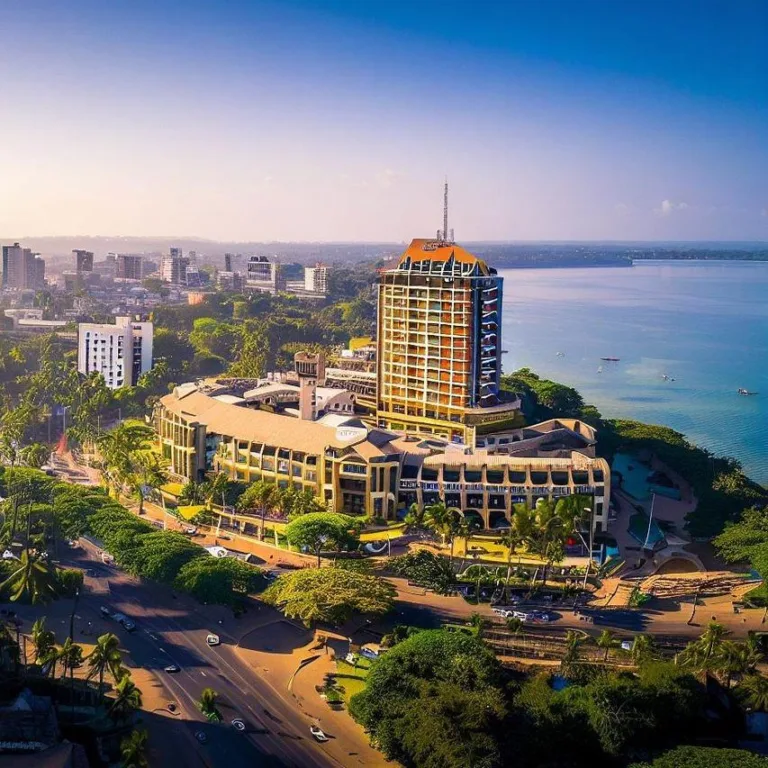Welcome to Dar es Salaam, a city that pulses with energy and offers a unique blend of culture, history, and modernity. As the largest city in Tanzania and its economic hub, Dar es Salaam holds a special place in the country’s heart. In this article, we will delve into the fascinating aspects of Dar es Salaam, from its rich history to its bustling markets and stunning coastal beauty.
The historical tapestry
Dar es Salaam’s history is a tapestry woven with influences from Arab traders, German colonizers, and British rulers. This melting pot of cultures is evident in the city’s architecture, cuisine, and way of life. The city’s name itself translates to „Haven of Peace“ in Arabic, reflecting its historical role as a trading post and port city.
Cultural kaleidoscope
The diversity of Dar es Salaam’s population is reflected in its vibrant cultural scene. From traditional dance performances to contemporary art galleries, the city offers a kaleidoscope of creative expressions. The National Museum and House of Culture stand as guardians of Tanzania’s history, housing artifacts that tell the story of the nation’s past.
Local Markets and Gastronomy
No visit to Dar es Salaam is complete without a journey through its bustling markets. Kariakoo Market, a sensory overload of colors and aromas, is a treasure trove of fresh produce, spices, and textiles. The local cuisine is a reflection of the city’s multicultural identity, with flavors influenced by Indian, Swahili, and Arabic traditions.
The thriving economy
Dar es Salaam is the economic powerhouse of Tanzania, serving as the country’s main port and business center. The city’s strategic location on the Indian Ocean has led to its growth as a major trading hub for East Africa. Its bustling harbor is a hive of activity, with ships from around the world docking to exchange goods.
Coastal beauty and leisure
Beyond its urban hustle, Dar es Salaam boasts stunning coastal beauty. Bongoyo Island and Mbudya Island offer tranquil escapes with crystal-clear waters and white sandy beaches. These idyllic spots are perfect for snorkeling, swimming, and picnicking, providing a stark contrast to the city’s lively streets.
Urban Growth and Infrastructure
The city’s rapid growth has led to the development of modern infrastructure. Contemporary skyscrapers share the skyline with historic buildings, creating a fusion of old and new. Dar es Salaam’s Julius Nyerere International Airport serves as a gateway to the country, welcoming both business travelers and tourists.
Frequently Asked Questions (FAQs)
Q: What is the best time to visit Dar es Salaam?
A: The city’s dry season from June to September is considered the best time to visit, with pleasant temperatures and minimal rainfall.
Q: How can I get around the city?
A: Dar es Salaam offers a range of transportation options, including taxis, buses, and bajaj (three-wheeled vehicles). Ride-hailing apps are also popular.
Q: What are the must-visit attractions in Dar es Salaam?
A: Be sure to explore the Kariakoo Market, Bongoyo Island, the National Museum, and the historic Askari Monument.
Q: Is Dar es Salaam safe for tourists?
A: While the city is generally safe, it’s important to take common-sense precautions such as avoiding poorly lit areas at night and safeguarding your belongings.
Q: Can I experience wildlife in Dar es Salaam?
A: While Dar es Salaam is not known for wildlife experiences, nearby national parks like Mikumi and Selous offer opportunities to see diverse wildlife.
Explore the heartbeat of Tanzania in Dar es Salaam, where history, culture, and modernity converge to create an unforgettable experience. From its bustling markets to its coastal beauty, the city offers a unique journey that will leave you captivated.
Viz také:






